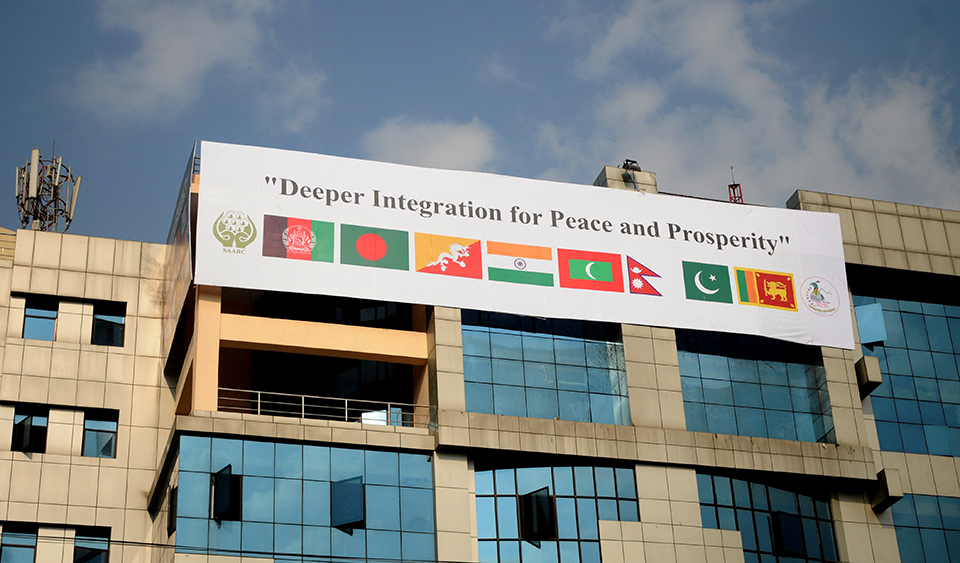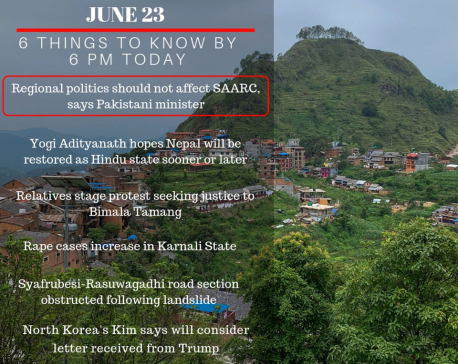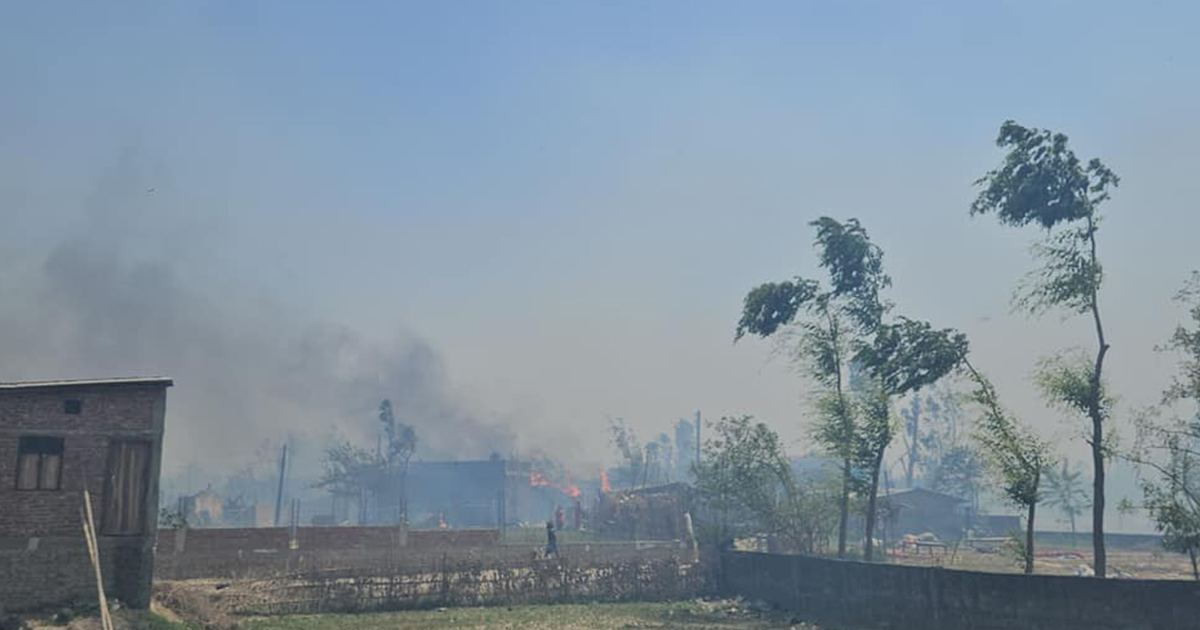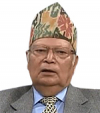
OR

More from Author
First challenge for SAARC is a weak Secretariat, which was originally designed as an extension of foreign ministries of member states.
This is a time of great anxiety in South Asia and profound changes the world over. The Trump administration’s unpredictability in conduct of international affairs has only increased our apprehension. A question arises: As the America’s international influence, both political and economic, goes down, will China, India, the EU or Russia try to fill-in the space that the US has vacated? What will be the nature of relationships between these ascending powers? Will it be mutually collaborative or more and more hostile? This has a direct bearing on the security and wellbeing of smaller countries in Southeast Asia and South Asia.
It is no secret that economic power is shifting to the Asia-Pacific. Asia already is the center of the global marketplace. In this context, even as it lies between two large markets of India and China, South Asia has not been able to collectively benefit from their rise. We are struggling to justify the role and function of the South Asian Association for Regional Cooperation (SAARC). Its 19th summit has been indefinitely postponed and skeptics are questioning the relevance and future of SAARC. For the past three years we have been unable to restart the process of holding the 19th summit, which is crucial at a time like this.
But South Asia was a late starter in the field of regional cooperation. As SAARC was established in 1985, the European Union’s evolutionary process was already in its third decade, while the Organization of African Unity (OAU) and the Association of Southeast Asian Nations (ASEAN) too were two decades old. But South Asian countries were still distant neighbors. We were living in the past hangover of complaints, grievances and mistrust.
We must also not overlook that almost all regional organizations are at present passing through turbulent weather. President Trump calls the North American Free Trade Agreement (NAFTA) the ‘worst trade deal ever’, the Gulf Cooperation Council (GCC) is facing its own rifts, while the ASEAN has till date been a failure as a community as the strong notion of national sovereignty continues to undermine its integration.
Fits and starts
In this context, we need not be impatient with SAARC’s tardy progress. I would like to recall the initiatives of Late King Birendra of Nepal and Late President of Bangladesh Ziaur Rahman to its founding in 1985. As relations between New Delhi and smaller neighbors were not cordial at the time, these two leaders played a decisive role to bring all seven member states (Afghanistan was later added) into the same boat and the idea of SAARC was realized.
India’s support was the main force for realizing the dream of establishing this organization. Otherwise the view that this would be a platform for all others to gang-up against India was strong in New Delhi. It was here that an understanding of bilateral, contentious issues not entering SAARC deliberations was first mooted. Three decades later, neither has New Delhi been successful in managing relations with its neighbors nor have its smaller neighbors been able to address its genuine concerns and apprehensions. In 1989, the SAARC summit could not be held. The 10th summit was held after a gap of four years. Finally, the 18th summit in Kathmandu decided to hold future summit once in two years and even that has not been possible for the past three years.
Therefore, past 30 years have been a time of many painful stories of lost opportunities and missed openings for South Asia. As other regions marched ahead on the path of better connectivity, and deepening trade, finance, energy and security cooperation, we lagged behind. We are still far away from what the 1985 Declaration had envisioned: regional cooperation, working towards finding solutions to common problems in a spirit of friendship, trust and mutual understanding and creation of a regional order based on mutual respect, equity and shared benefits.
We also tried alternative approaches to regional cooperation and began exploring sub-regional efforts between some of us rather, efforts like the South Asian Growth Quadrangle and now the BBIN and also the BIMST-EC. It remains to be seen if these new initiatives will result in something more meaningful. For now, it is our duty to reenergize the SAARC process because it is in our collective interest to see that it delivers. We have invested a lot in this project. We must not allow it to fail.
All pomp
I feel that the first challenge for SAARC is a weak Secretariat, which was originally designed as an extension of the foreign ministries of member states. Our forefathers envisioned an evolutionary process, through which the secretariat would be made gradually effective. But there have been no initiatives to hold an early summit. The secretariat is powerless with regards to bridging the communication gap and building understanding among member states, especially India and Pakistan. Its direct contact is only with joint secretaries of individual foreign ministries, which is not enough in a complex region such as ours.
Second, all SAARC meets are heavy on fanfare and light on substance. At the Council of Ministers Meeting in March 1999 held in Newara Elia in Sri Lanka, I had proposed that we reduce fanfare and set aside more time for retreat part of the Summit, which has proven to be a useful platform. Leaders have in subsequent years directed us to develop outcome-oriented policies, programs, projects and activities.
But a lot more needs to be done. South Asia is at the center of international politics as new adjustments are being made in international relations. We have already done a lot of investment in SAARC. Now is the time not only to revitalize and reenergize this organization but also to make sure that it emerges as a regional force for collective benefit of us all.
The author is a former foreign minister of Nepal
The article is excerpted from the author’s speech at the regional conference on ‘Re-Energizing the SAARC Process’ organized by the Consortium of South Asian Think-tanks and the National University of Singapore, in Singapore on Aug 21
You May Like This

June 23: 6 things to know by 6 PM today
Your daily dose of missed important news of the day. ... Read More...

Stress on minimizing post-disaster economic loss
KATHMANDU, Sept 25: The 21st AIRDC Conference 2018 kicked off here from today. ... Read More...

SAARC Program Committee meeting underway
KATHMANDU, Feb 1: South Asian Association for Regional Cooperation (SAARC) Program Committee's 53rd meeting is underway in the capital city. ... Read More...





Just In
- World Malaria Day: Foreign returnees more susceptible to the vector-borne disease
- MoEST seeks EC’s help in identifying teachers linked to political parties
- 70 community and national forests affected by fire in Parbat till Wednesday
- NEPSE loses 3.24 points, while daily turnover inclines to Rs 2.36 billion
- Pak Embassy awards scholarships to 180 Nepali students
- President Paudel approves mobilization of army personnel for by-elections security
- Bhajang and Ilam by-elections: 69 polling stations classified as ‘highly sensitive’
- Karnali CM Kandel secures vote of confidence















Leave A Comment